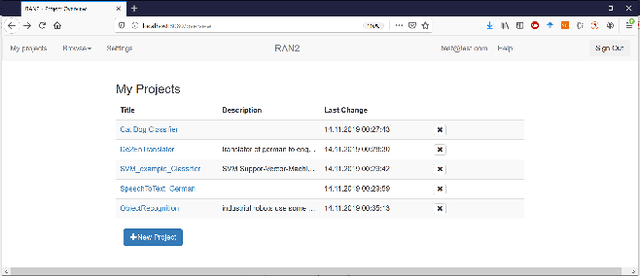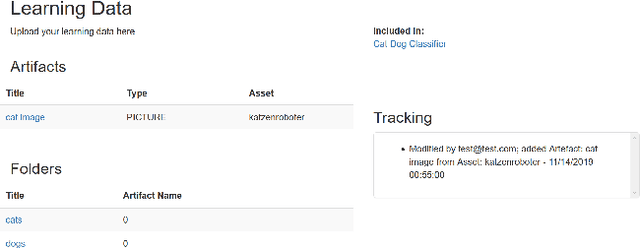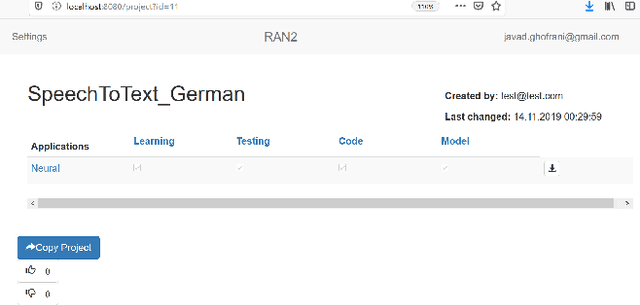Javad Ghofrani
Repository for Reusing Artifacts of Artificial Neural Networks
Mar 30, 2020



Abstract:Artificial Neural Networks (ANNs) replaced conventional software systems in various domains such as machine translation, natural language processing, and image processing. So, why do we need an repository for artificial neural networks? Those systems are developed with labeled data and we have strong dependencies between the data that is used for training and testing our network. Another challenge is the data quality as well as reuse-ability. There we are trying to apply concepts from classic software engineering that is not limited to the model, while data and code haven't been dealt with mostly in other projects. The first question that comes to mind might be, why don't we use GitHub, a well known widely spread tool for reuse, for our issue. And the reason why is that GitHub, although very good in its class is not developed for machine learning appliances and focuses more on software reuse. In addition to that GitHub does not allow to execute the code directly on the platform which would be very convenient for collaborative work on one project.
A Systematic Mapping Study on Blockchain Technology for Digital Protection of Communication with Industrial Control
Mar 30, 2020



Abstract:In the next few years, Blockchain will play a central role in IoT as a technology. It enables the traceability of processes between multiple parties independent of a central instance. Blockchain allows to make the processes more transparent, cheaper, and safer. This research paper was conducted as systematic literature search. Our aim is to understand current state of implementation in context of Blockchain Technology for digital protection of communication in industrial cyber-physical systems. We have extracted 28 primary papers from scientific databases and classified into different categories using visualizations. The results show that the focus in around 14\% papers is on solution proposal and implementation of use cases "Secure transfer of order data" using Ethereum Blockchain, 7\% papers applying Hyperledger Fabric and Multichain. The majority of research (around 43\%) is focusing on solution development for supply chain and process traceability.
Machine Vision in the Context of Robotics: A Systematic Literature Review
May 03, 2019



Abstract:Machine vision is critical to robotics due to a wide range of applications which rely on input from visual sensors such as autonomous mobile robots and smart production systems. To create the smart homes and systems of tomorrow, an overview about current challenges in the research field would be of use to identify further possible directions, created in a systematic and reproducible manner. In this work a systematic literature review was conducted covering research from the last 10 years. We screened 172 papers from four databases and selected 52 relevant papers. While robustness and computation time were improved greatly, occlusion and lighting variance are still the biggest problems faced. From the number of recent publications, we conclude that the observed field is of relevance and interest to the research community. Further challenges arise in many areas of the field.
XDANNG: XML based Distributed Artificial Neural Network with Globus Toolkit
Jul 01, 2009

Abstract:Artificial Neural Network is one of the most common AI application fields. This field has direct and indirect usages most sciences. The main goal of ANN is to imitate biological neural networks for solving scientific problems. But the level of parallelism is the main problem of ANN systems in comparison with biological systems. To solve this problem, we have offered a XML-based framework for implementing ANN on the Globus Toolkit Platform. Globus Toolkit is well known management software for multipurpose Grids. Using the Grid for simulating the neuron network will lead to a high degree of parallelism in the implementation of ANN. We have used the XML for improving flexibility and scalability in our framework.
* 8 pages, international journal of computer science and information security
 Add to Chrome
Add to Chrome Add to Firefox
Add to Firefox Add to Edge
Add to Edge